1. 7 - 14 days
2. Iron defeciency anemia
2.1. Pharmacological
3. Iron sulfate
4. Second Session
4.1. Step (6): Review of Learning Objectives
4.1.1. Most commone cause infection (90 percent)
4.1.1.1. Viral
4.1.1.1.1. Rota
4.1.1.1.2. Presentation
4.1.1.2. Bacterial
4.1.1.2.1. Presnetaion
4.1.1.2.2. Organisms
4.1.1.3. Parasite
4.1.1.3.1. Developing countries
4.1.1.3.2. Presentation
4.1.1.3.3. Organisms
4.1.2. Hirshsprung disease
4.1.3. Anatomical abnormalities
4.1.3.1. Achlordia
4.1.3.1.1. Start to appear at 2 years of aga
4.1.4. Drugs
4.1.4.1. Antibiotics
4.1.4.1.1. Impaired water reabsorbtion
4.1.5. Food posiging
4.1.5.1. Goes away with
4.1.6. IBS
4.1.7. Chron's disease
4.2. Step (7): Gathering Information & Inquiry Plan
4.2.1. History
4.2.1.1. History of presenting problem
4.2.1.1.1. More than 10 diapers - green watery no blood stool
4.2.1.1.2. For 2 weeks and then stopped
4.2.1.1.3. Vomited of of the milk last 12 hours
4.2.1.1.4. Febrile
4.2.1.1.5. Crys alot
4.2.1.1.6. Tried different formulas
4.2.1.1.7. Rash that got resolved
4.2.1.1.8. 2 of his siblings had it for 2 weeks (2 and 5 years old)
4.2.1.2. No family history of diseases
4.2.1.3. Past
4.2.1.3.1. 3rd episode of diaheeewa
4.2.1.3.2. Before it was yallow
4.2.1.3.3. No other diseases
4.2.1.3.4. No drugs
4.2.1.3.5. No allergies
4.2.1.4. Smiled at
4.2.1.5. Developing
4.2.1.5.1. Smiled at 6
4.2.1.5.2. Babbling sounds
4.2.1.6. Peri
4.2.1.6.1. 3.15
4.2.1.6.2. 49
4.2.1.6.3. head CIRCUMSTANCE is 13
4.2.1.6.4. Complicated with minor bleeding
4.2.1.6.5. Hypertension in the last 5 weeks
4.2.1.6.6. Discharged at day 4
4.2.1.7. Vacination
4.2.1.7.1. Hep b
4.2.1.8. Social
4.2.1.8.1. Could not attend clinics
4.2.1.8.2. Stressed all the time
4.2.1.8.3. Father often away from home
4.2.1.8.4. Social
4.2.1.8.5. Sister advice her sister
4.2.2. Physical Examination
4.2.2.1. Thin face
4.2.2.2. Vital
4.2.2.2.1. 38
4.2.2.2.2. 130
4.2.2.2.3. 85/60
4.2.2.2.4. 40
4.2.2.2.5. less than 2 sec
4.2.2.2.6. 25 - 50 per
4.2.2.2.7. less than 3rd per
4.2.2.3. Loss folds
4.2.2.4. Liver 2 cm beolw the margin
4.2.2.5. Papular rash in arms and trunks and scratches
4.2.2.6. too sick for accurate developmntal assessment
4.2.3. Investigation
4.2.3.1. CBC
4.2.3.1.1. 90g/liter
4.2.3.2. Microcytosis and hypochromia
4.2.3.3. Urin
4.2.3.3.1. Less than 10 RBC
4.2.3.3.2. 10 - 100
4.2.3.3.3. Mixed growth
4.2.3.4. No growth of organisms in blood
4.2.3.5. Sodium is high
4.2.3.6. Potassium is low
4.2.3.7. Urea us high
4.2.3.8. Cer high
4.2.3.9. Bic is low
4.3. Step (8): Diagnostic Decision
4.3.1. Mechanism
4.3.2. Presentation
4.3.2.1. Vomiting - diah and faliure to thrive febrile not feeding well - siblings complain of same problem - poor medical care
4.3.3. Supporting Data
4.3.3.1. Vomiting dia and faliure to thrive febrile not feeding well - siblings complain of same problem - poor medical care - low Hb - iron defeciency - high sodium, cer and urea - bacterial growth in urine - rota virus
4.4. Normal pattern of feeding
4.4.1. Regularity
4.4.2. Amount
4.4.3. Consider the following
4.5. Causes of faliure
4.5.1. Decreased intake
4.5.1.1. Anamoly
4.5.2. Decreased appetit
4.5.2.1. Anemia
4.5.2.2. Infection
4.5.3. Decreas absorbtion
4.5.3.1. Diarrhea
4.5.3.2. Cystic fibosis
4.5.4. Increased ultization
4.5.4.1. Hyperthyrodism
4.5.5. Others
4.5.5.1. Neglect
4.5.5.2. Poor eating pattern
4.5.6. Defention
4.5.6.1. Rate of gain of wight is less compared to other children with the same age and
4.5.7. Less than 80 percent
5. Third Session
5.1. Step (9): Review of Learning Objectives
5.1.1. 1- Management of a patient presented with gastroenteritis due to rota virus infecion
5.1.2. 2- Managment of UTI and iron defeciency anemia
5.2. Step (10): Management
5.2.1. Rota virus
5.2.1.1. Before going to the hospital
5.2.1.2. Symptoms
5.2.1.2.1. Cry without tears
5.2.1.2.2. Sticky mouth
5.2.1.2.3. Craving for fluids
5.2.1.2.4. Depretion of the fontanal
5.2.1.3. Managment
5.2.1.3.1. Usually is self limiting 3-9 days
5.2.1.3.2. Short term
5.2.1.3.3. Long term
5.2.2. UTI
5.2.2.1. Complicated
5.2.2.1.1. Duration of treatment
5.2.2.2. Non complicated
5.2.2.2.1. Duration of treatment
5.2.2.3. Comments
5.2.2.3.1. If age less than 2 monthes >> immediate hospitlization
5.2.2.3.2. If febrile more than 2 days >> increase the duration of treatment
5.2.2.3.3. Consider the most common organism based on age and consider resistance
5.2.3. Iron
5.2.3.1. Ferous sulphate
5.2.3.1.1. Check the stool
5.2.3.1.2. Check iron profile
5.2.3.1.3. Tablets or inject
5.2.3.2. Non pharamacological
5.3. Step (11): Feedback & Resources
5.3.1. Resources
5.3.1.1. Uptodate
5.3.1.2. Medscap
6. First Session
6.1. Step (1): Identifying Difficult Words & Cues
6.1.1. Difficult Words
6.1.1.1. Misrable
6.1.2. Cues
6.1.2.1. 9 months infant
6.1.2.2. Small for his age
6.1.2.3. 5 kg
6.1.2.4. Vomiting and diarrhea
6.1.2.5. Brother and sister are unwell with similar illnese
6.1.2.6. Lives 40 minutes frim the city
6.2. Step (2): Problem Formulation
6.2.1. 9 months old infant presented with vomiting and diarrhea. His is small for his age. His brother and sister are complaining of the same problem.
6.3. Step (3): Hypotheses Generation
6.3.1. Infection
6.3.2. Lactose intolerance
6.3.3. Malnurishmint
6.3.4. Acute gasteritis
6.3.5. Congnital problem
6.3.6. Triggers of vomiting could be organic or physiological
6.3.7. Diarrhea is a defensive mechanism
6.3.8. Less likely to be immune related
6.3.8.1. Because of tropism
6.4. Step (4): Hypotheses Organization
6.4.1. Infectious
6.4.2. Inherited
6.4.3. Metabolic
6.5. Step (5): Learning Objectives
6.5.1. Common causes of acute diarrhea and vomiting in children (offensive and watery type of diarrhea)
6.5.2. Normal patterns of feeding in infants
6.5.3. Cause for failure to thrive
